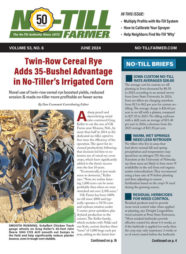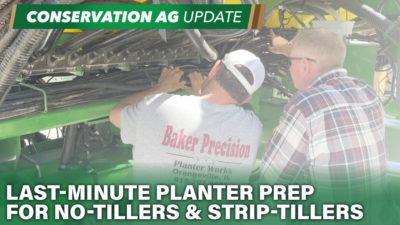Jack Clark has been no-till farming for 25 years. He started with no-till corn in 1982.
“I began no-tilling to control erosion, save labor, save wear and tear on equipment, and save money,” he says.
He had such good results with his no-till corn that he started no-tilling wheat in 1997 and soybeans in 2003.
Jack Clark owns and operates a 1,500-acre farm located in east-central Whitley County Kentucky. The dominant cropland soils are Huntington silt loam (a fine-silty, mixed, active, mesic Fluventic Hapludolls), 0 to 4 percent slope and Cotaco silt loam (a fine-loamy, mixed, semiactive, mesic Aquic Hapludults), 0 to 4 percent slope.
Mr. Clark’s farming operation consists of approximately 200 acres corn, 100 acres soybeans, 125 acres wheat, 1,075 acres pasture/woodland, 160 beef cows, and 150 feeder cattle. All corn, wheat, and soybeans are no-tilled or drilled into last year’s crop residue or cover crop. Rotations include corn and double cropped wheat and soybeans.
Clark says the benefits he's received by going to no-till include less wear and tear on equipment, fuel savings, time savings, decreased soil erosion, and less inorganic fertilizer needs for crops.
Mr. Clark has overcome some of the challenges of no-tillage.
“I used to have a Johnsongrass problem in some of my fields before chemical companies came out with herbicides for Johnsongrass control. It was difficult to grow crops in these fields, especially no-tilled crops," he says.
“Johnsongrass is no longer a problem. The improvement and/or development of chemicals for weed and pest eradication have gone a long way in making no-tillage sustainable year after year.”
He believes two reasons no-tillage has been and will remain successful are innovative chemicals to control diseases, pests, and weeds and innovative seed technology.






Post a comment
Report Abusive Comment